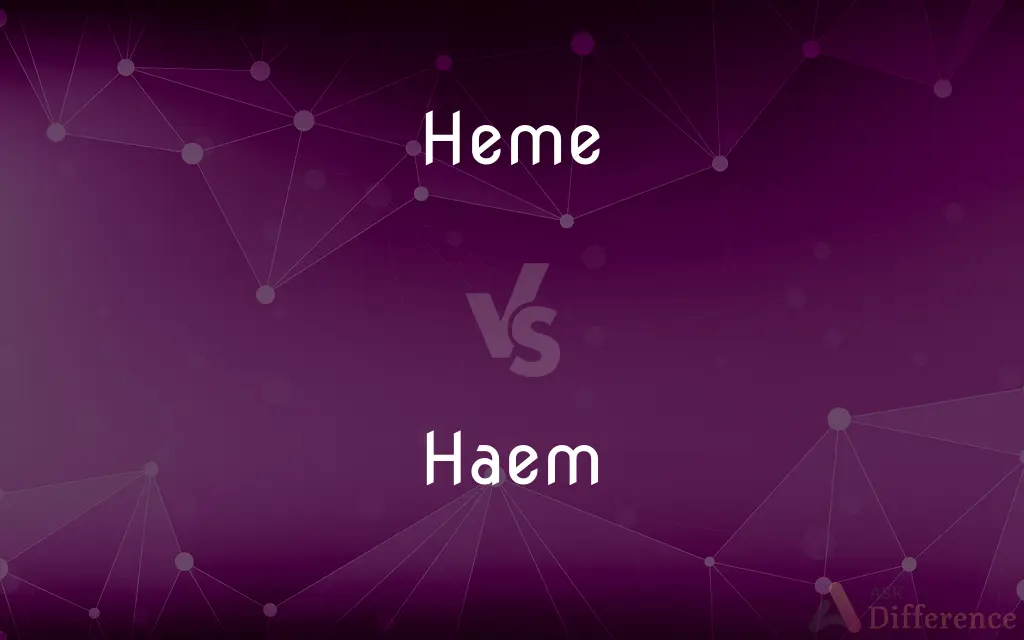Heme vs. Haem — What's the Difference?

Difference Between Heme and Haem
ADVERTISEMENT
Compare with Definitions
Heme
Heme, or haem (spelling differences) is a substance precursive to hemoglobin, which is necessary to bind oxygen in the bloodstream. Heme is biosynthesized in both the bone marrow and the liver.In microbiological terms, heme is coordination complex "consisting of an iron ion coordinated to a porphyrin acting as a tetradentate ligand, and to one or two axial ligands." The definition is loose, and many depictions omit the axial ligands.
Haem
Variant of heme.
Heme
A deep red, iron-containing compound, C34H32FeN4O4, that constitutes the nonprotein component of hemoglobin and certain other proteins.
Haem
Standard spelling of from2=Canada
Heme
(biochemistry) The component of hemoglobin (and other hemoproteins) responsible for binding oxygen. It consists of an iron ion that binds oxygen and a porphyrin ring that binds the globin molecules; one molecule binds one molecule of oxygen.
ADVERTISEMENT
Haem
A complex red organic pigment containing iron and other atoms to which oxygen binds
Heme
A complex red organic pigment containing iron and other atoms to which oxygen binds
Share Your Discovery

Previous Comparison
Marten vs. Sable
Next Comparison
Subscribe vs. Prescribe














































